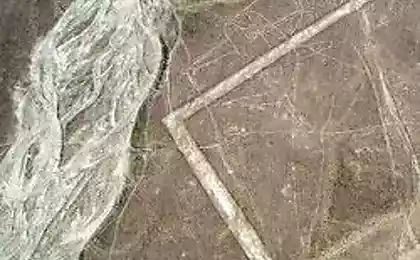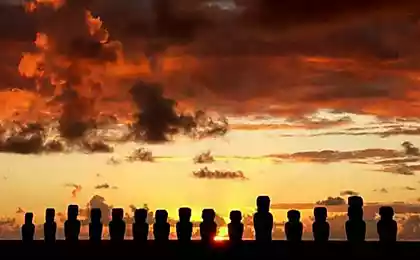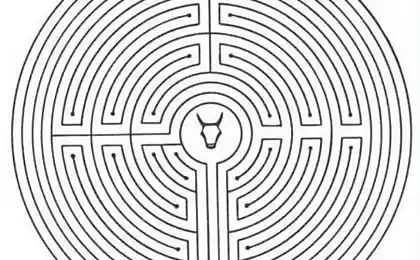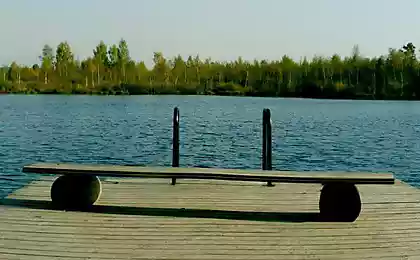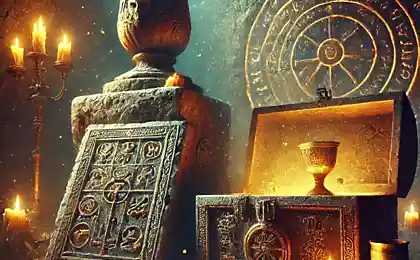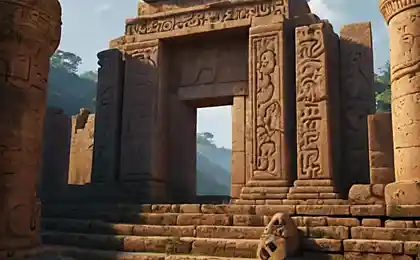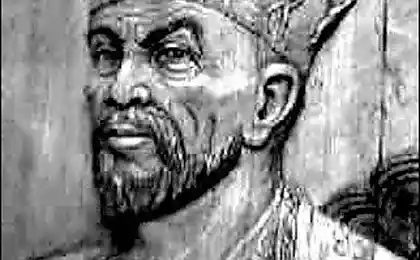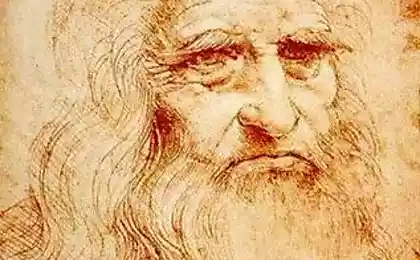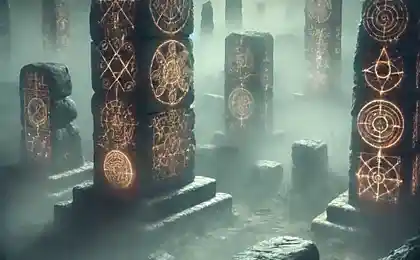1429
MYSTERY northern labyrinths
Solovetsky Archipelago - how gloomy secrets and forgotten legends associated with this place. One of the unsolved mysteries it still remains the origin of stone labyrinths - strange, mystical patterns laid out on the ground. How and when they appeared on the islands, who were created and what purpose is served - to these questions, researchers still can not give a definite answer.
Total Solovki found 35 mazes, most of them scattered throughout the Greater Zayatsky island. Lined with small and large boulders ornaments vary in size and pattern. Most often they are constructed as a helix or helices of the two inscribed one into another. A labyrinth is only one entrance, which is at the same time serves as the output: the person who decides to go through the maze and keep His rules, after some time with the surprise that came out in the same place where gone.
Age mazes - about three thousand years, archaeologists say. Who is left on the islands, these intricate patterns of the stones is not known. According to one version, it was the ancient Pomeranian tribes, long consigned to oblivion, on the other - the northern sailors, who investigated the cold waters of the sea to breathe, nowadays referred to as White. Proponents of this hypothesis is supported by his argument that almost all of the mazes are located on the coast.
Another unsolved mystery remains strange destiny stone ornaments. Versions of the set, from a purely scientific to the absolutely fantastic. At different times prone to mystification "theorists" thought mazes traces of aliens, means of communication, by which the ancient people communicated with the cosmos, and even portals to another world. Ironically, the latest version of solidarity most serious researchers. They believe that the mazes were sacred purposes and actually used to go to another world - the afterworld. In these places, primitive people carried out rituals of burial of the dead.
Even the drawing mazes speaks in favor of this theory. Its shape resembles a spiral ring curled snakes. It was a snake in the Karelian-Finnish epos as a symbol of death and was associated with the other world: its human bite sent straight to the realm of the dead. The complex structure of the drawings, many scientists, including lexicographer NN Vinogradov, explained by the fact that the ancients believed, entangled in a maze, the soul of the deceased will not be able to come back and hurt the living.
However, in this seemingly plausible theory is not so simple. If we assume that the mazes were indeed ancient temple, how to explain the fact that not all under mounds have found the remains of burials? At one time, a prominent Soviet archaeologist AJ Bruce, brother of the poet-symbolist VJ Bryusov, trying to discover the remains under a maze on the Big Island Zayatsky. The results of his unsuccessful excavations and can be seen today, arriving at Solovki: unable to find a trace of burial, archaeologist, apparently, so very angry that I forgot for a clean and threw stones torn up from the ground right at the entrance to the maze.
There are far more prosaic assumptions about the purposes of construction of mazes. For example, a researcher Leonid Ershov spoke about the meaning of the calendar stone figures and Karelian ethnographer IM Mullah claims that they are nothing more than, as a scheme, focusing on which primitive fishermen built a trap for fishing.
Whatever it was, the hypothesis remains a hypothesis: none of them have not received sufficient evidence. To this day, the far northern islands continue to attract curious travelers and scientists, eager to unravel the mystery and to understand what is the true value of the maze. The decision may give an answer to a much more global question: how could it happen that the symbol of the labyrinth appeared in use completely different ancient peoples around the same time on all five inhabited continents?
my.mail.ru/community/prekrasna_makosh/1D05D1ED..
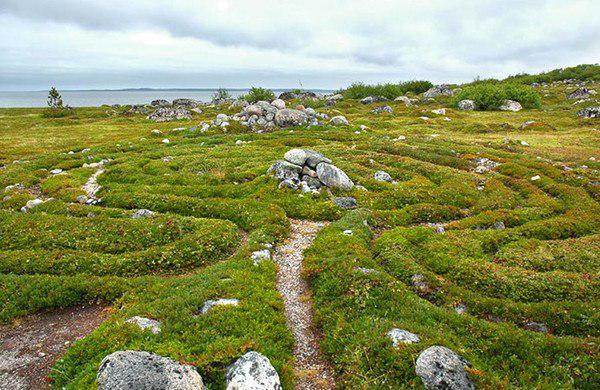


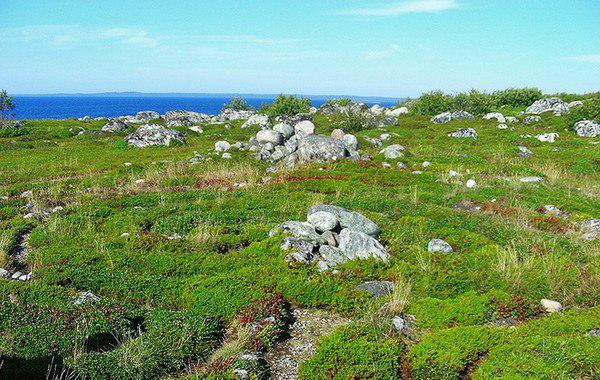
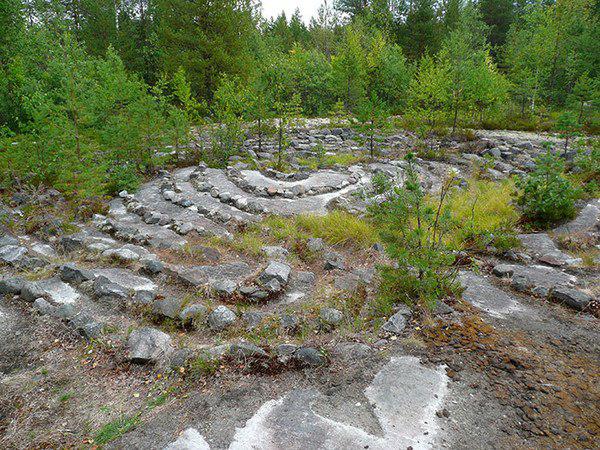


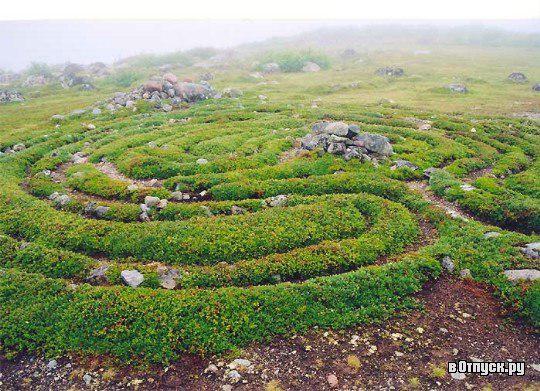
Total Solovki found 35 mazes, most of them scattered throughout the Greater Zayatsky island. Lined with small and large boulders ornaments vary in size and pattern. Most often they are constructed as a helix or helices of the two inscribed one into another. A labyrinth is only one entrance, which is at the same time serves as the output: the person who decides to go through the maze and keep His rules, after some time with the surprise that came out in the same place where gone.
Age mazes - about three thousand years, archaeologists say. Who is left on the islands, these intricate patterns of the stones is not known. According to one version, it was the ancient Pomeranian tribes, long consigned to oblivion, on the other - the northern sailors, who investigated the cold waters of the sea to breathe, nowadays referred to as White. Proponents of this hypothesis is supported by his argument that almost all of the mazes are located on the coast.
Another unsolved mystery remains strange destiny stone ornaments. Versions of the set, from a purely scientific to the absolutely fantastic. At different times prone to mystification "theorists" thought mazes traces of aliens, means of communication, by which the ancient people communicated with the cosmos, and even portals to another world. Ironically, the latest version of solidarity most serious researchers. They believe that the mazes were sacred purposes and actually used to go to another world - the afterworld. In these places, primitive people carried out rituals of burial of the dead.
Even the drawing mazes speaks in favor of this theory. Its shape resembles a spiral ring curled snakes. It was a snake in the Karelian-Finnish epos as a symbol of death and was associated with the other world: its human bite sent straight to the realm of the dead. The complex structure of the drawings, many scientists, including lexicographer NN Vinogradov, explained by the fact that the ancients believed, entangled in a maze, the soul of the deceased will not be able to come back and hurt the living.
However, in this seemingly plausible theory is not so simple. If we assume that the mazes were indeed ancient temple, how to explain the fact that not all under mounds have found the remains of burials? At one time, a prominent Soviet archaeologist AJ Bruce, brother of the poet-symbolist VJ Bryusov, trying to discover the remains under a maze on the Big Island Zayatsky. The results of his unsuccessful excavations and can be seen today, arriving at Solovki: unable to find a trace of burial, archaeologist, apparently, so very angry that I forgot for a clean and threw stones torn up from the ground right at the entrance to the maze.
There are far more prosaic assumptions about the purposes of construction of mazes. For example, a researcher Leonid Ershov spoke about the meaning of the calendar stone figures and Karelian ethnographer IM Mullah claims that they are nothing more than, as a scheme, focusing on which primitive fishermen built a trap for fishing.
Whatever it was, the hypothesis remains a hypothesis: none of them have not received sufficient evidence. To this day, the far northern islands continue to attract curious travelers and scientists, eager to unravel the mystery and to understand what is the true value of the maze. The decision may give an answer to a much more global question: how could it happen that the symbol of the labyrinth appeared in use completely different ancient peoples around the same time on all five inhabited continents?
my.mail.ru/community/prekrasna_makosh/1D05D1ED..









